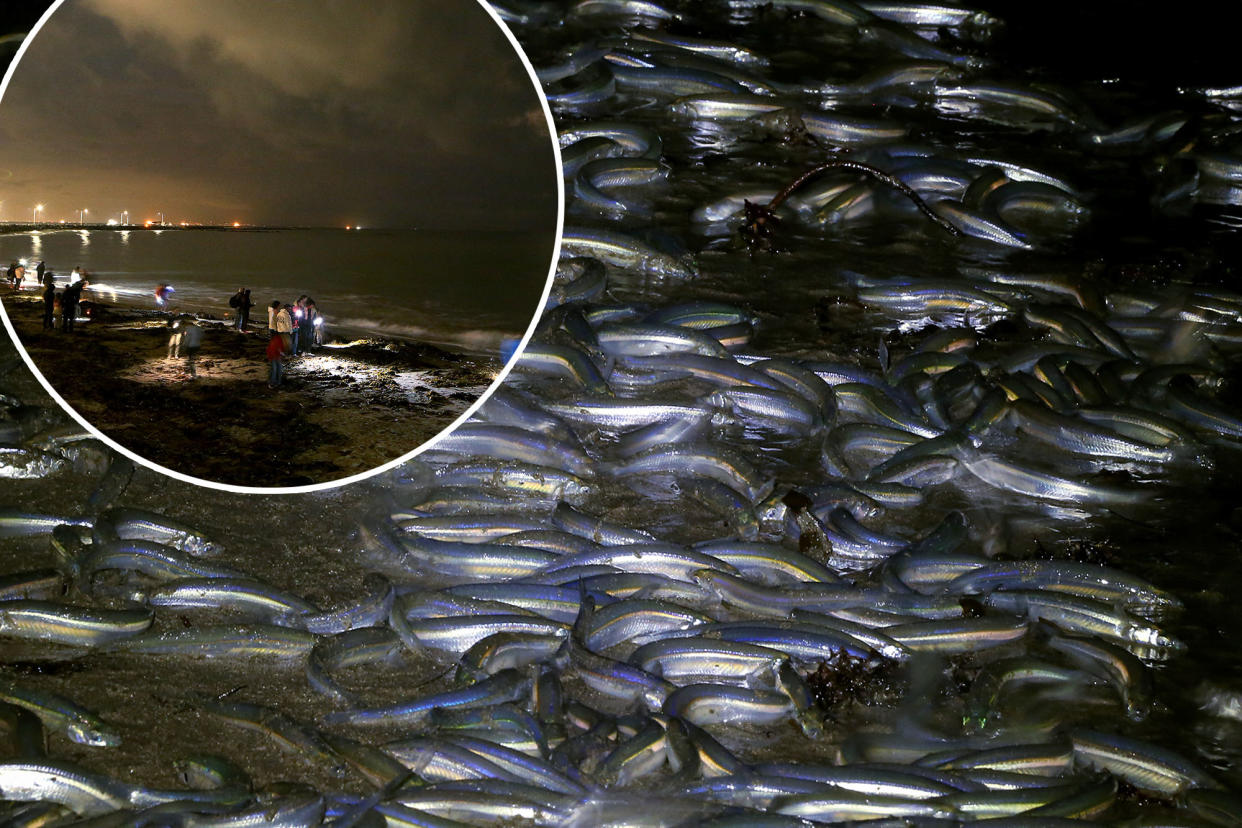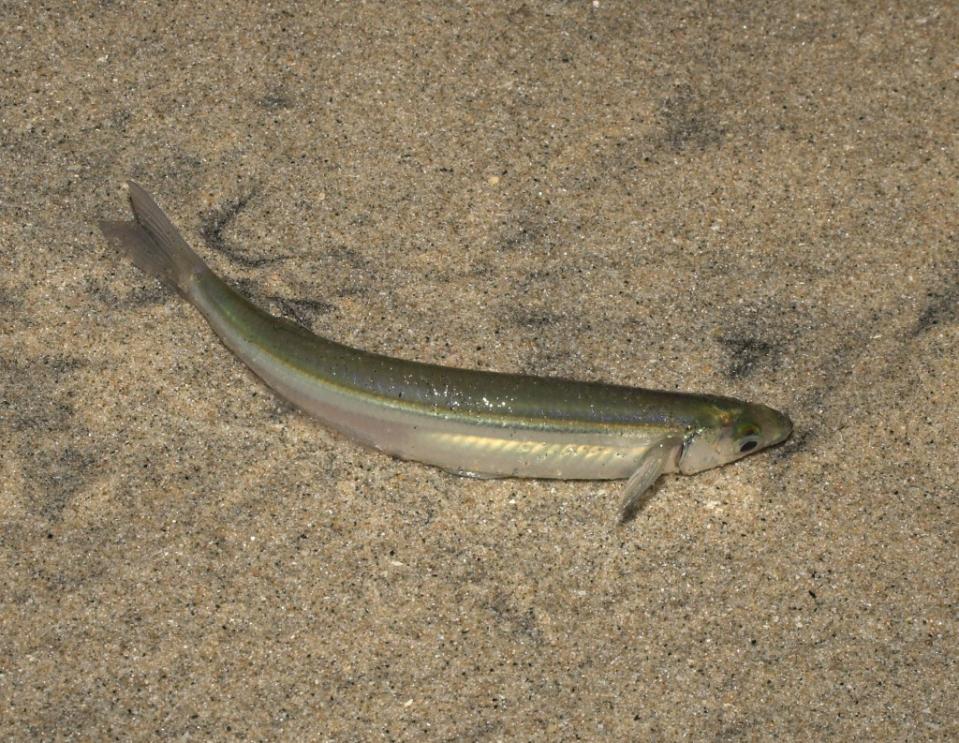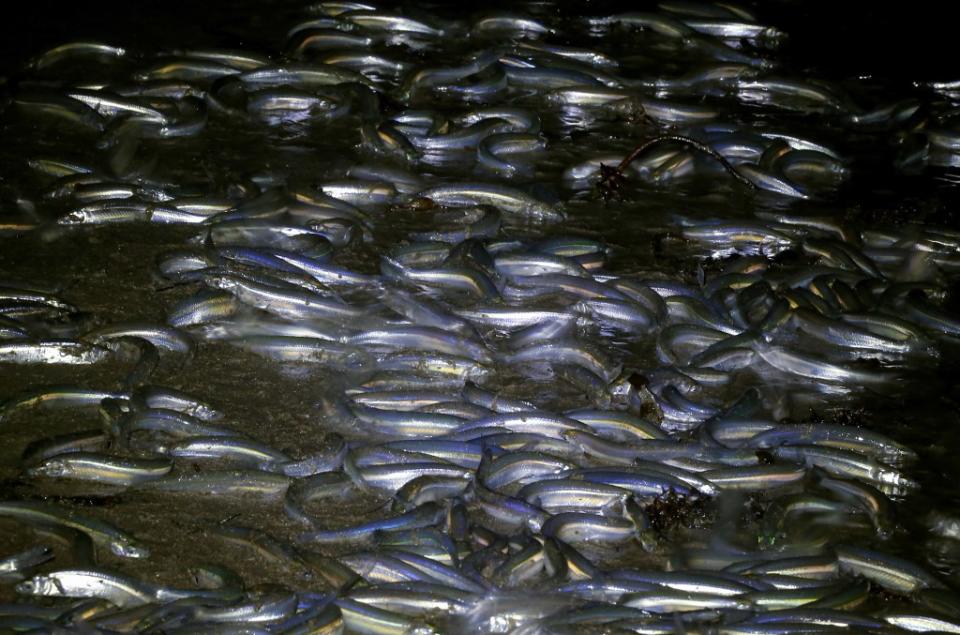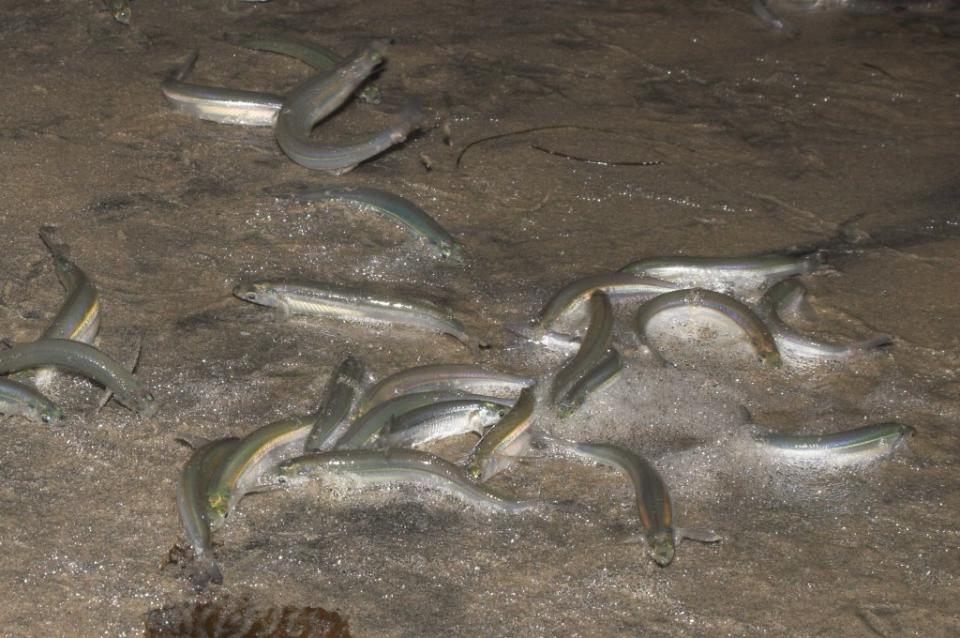Fish orgies taking over California beaches during full moon — the strange reason why revealed

Is this the ultimate sex on the beach?
Millions of fish called grunions have descended upon California beaches to throw their annual orgy under the full moon.
“Looked like some post-apocalyptic marine ‘Mad Max,'” one citizen scientist wrote while describing the carnal congregations, the BBC reported.
This eyewitness is one of many volunteer researchers who gather on the California coastline to witness the annual “grunion run,” which occurs from February to September with a freaky peak between April and June.

For the uni-fish-iated, these hotdog-shaped fish — which grow up to 5 inches long — reside off the coast of Southern California and Northern Baja California.
However, their mating habits are unique in that, unlike most fish, these silver swimmers have sex on the beach, carpeting the sand like scaly spring breakers.
During the bizarre mating ritual, which occurs during full or new moons as their water sports require high tides, females swim as close to the beach as they can. They then jump from sea to shore and use their tails to burrow a hole in the sand, into which they expel their eggs (generally around 3,000).
The male then swims by and fertilizes the batch. They remain buried until swept out to sea by the next tide high enough to reach them; subsequently, the baby grunions hatch.
This salacious spring fling has become something of a local legend; it was notably featured in the 1991 teen comedy “Don’t Tell Mom the Babysitter’s Dead,” the Guardian reported.

It also attracts crowds of people, most notably citizen scientists — known as “grunion greeters” — who have been observing the fish orgies since 2002.
These volunteer voyeurs check out the spectacle at more than 50 California beaches, and they then report their findings to biologist Karen Martin, a scientist at Malibu’s Pepperdine University who has been studying grunions for decades.
“We couldn’t do it without them,” gushed the researchers, whose project has seen more than 5,000 contributors.
While it might seem voyeuristic, observing these seaside orgies is the only way to study the fish, which are nearly impossible to count once seaborne.

“Normal” methods for stock assessment don’t work because grunions smartly avoid nets and won’t take bait from a hook, Martin explained.
As a result, the species’ habits once at sea have remained a mystery to scientists.
Studying the species is essential given that the promiscuous fish is reportedly on the decline.
“Findings show a decrease in the number of spawning California grunion across much of their southern California range over the past decade,” said Dianna Porzio, senior environmental scientist at the California Department of Fish and Wildlife.
Meanwhile, their seaside soirées are under threat from beach erosion, beach grooming machines and climate change that affects their temperature-sensitive eggs.
Along with being susceptible to birds and other predators, romping grunions also present an easy target for people, who use them for bait and even fry them up as a snack.

